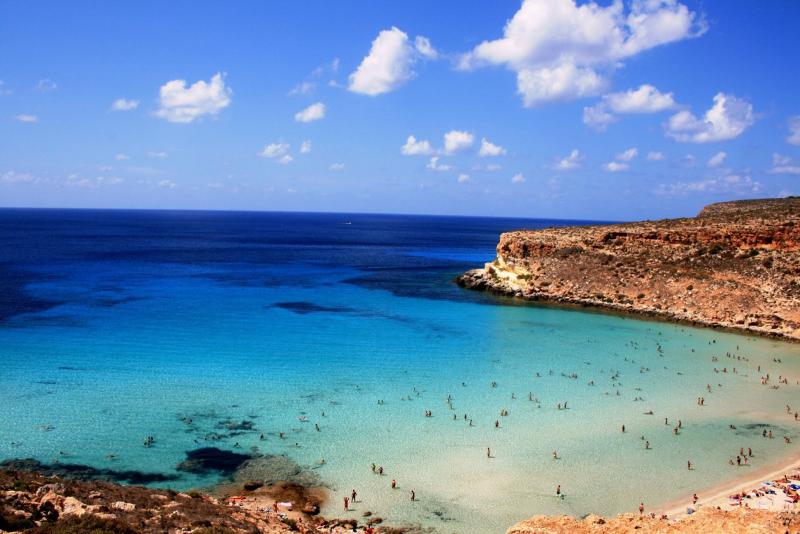Linosa, Away From It All
ITA:

Use player to listen to Italian version
In the midst of the Mediterranean Sea, approximately at the same distance between Sicily and Tunisia, Linosa is a small island of volcanic origin, part of the archipelago of the Pelagie Islands, along with the more famous Lampedusa and the uninhabited Lampione. Formed thousands of years ago, the island is cited first as Greek Aethusa by Strabo and Algusa by the Roman Pliny the Elder in his Naturalis Historia.
Linosa and the surrounding sea are part of a Nature Reserve, rich with endemic plants, some of which can only be seen on the island. Linosa is one of the few remaining places (along with Ionian Calabria) where the turtles of the Caretta Caretta species lay their eggs, on the Pozzolana beach precisely. You could also observe nests of many marine birds.
Part of the island is occupied by ancient volcanic craters; for this reason there’s no airport on the island. To reach Linosa, you fly into Agrigento, then take the ferry.
With a population of 430 and a distance from each continental coast of 160 km, a stay on the island of Linosa is decidedly unique, intimate, but may also feel isolated. The island is barren and gets very hot in summer, with little protection from the sun.
There aren’t many hotels, and accommodation is generally organized in one of the available rental homes, typical constructions of the island, white in color and square in shape. Beaches are generally reached by walking.
Nel mezzo del Mar Mediterraneo, a circa la stessa distanza tra la Sicilia e la Tunisia, Linosa è una piccola isola di origine vulcanica, parte dell'arcipelago delle Isole Pelagie, insieme alla più famosa Lampedusa e alla disabitata Lampione. Formatasi migliaia di anni fa, l'isola è citata prima dal greco Strabone come Aethusa e dal romano Plinio il Vecchio come Algusa nella sua Naturalis Historia.
Linosa e il mare circostante fanno parte di una Riserva Naturale, ricca di piante endemiche, alcune delle quali possono essere osservate solo sull'isola. Linosa è uno dei pochi luoghi rimasti (insieme alla Calabria ionica) dove le tartarughe della specie Caretta Caretta depongono le uova, in particolare sulla spiaggia di Pozzolana. Si osservano anche i nidi di molti uccelli marini.
Parte dell'isola è occupata da antichi crateri vulcanici; per questo motivo non c'è nessun aeroporto sull'isola. Per raggiungere Linosa, si vola ad Agrigento, quindi si prende il traghetto.
Con una popolazione di 430 residenti e una distanza dalle coste continentali di 160 km, un soggiorno sull'isola di Linosa è decisamente unico, intimo, ma può anche far sentire isolati. L'isola è brulla e diventa molto calda in estate, con pochi ripari dal sole.
Non ci sono molti hotel e la sistemazione è generalmente organizzata nelle case, costruzioni tipiche dell'isola, di colore bianco e di forma quadrata. Le spiagge sono generalmente raggiungibili solo a piedi.











